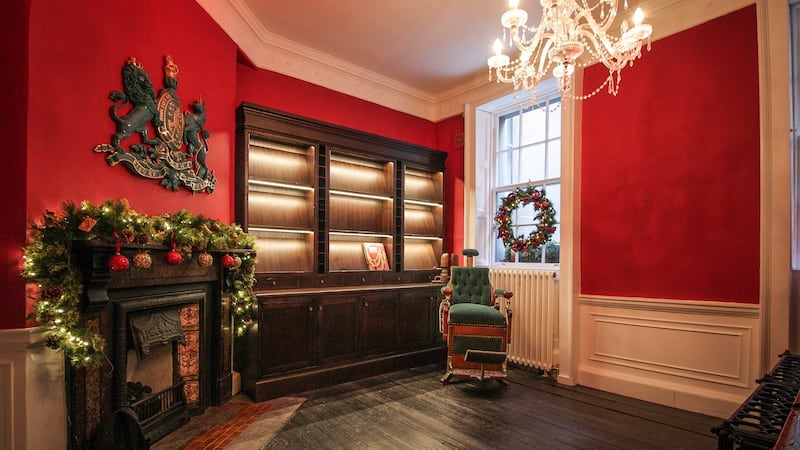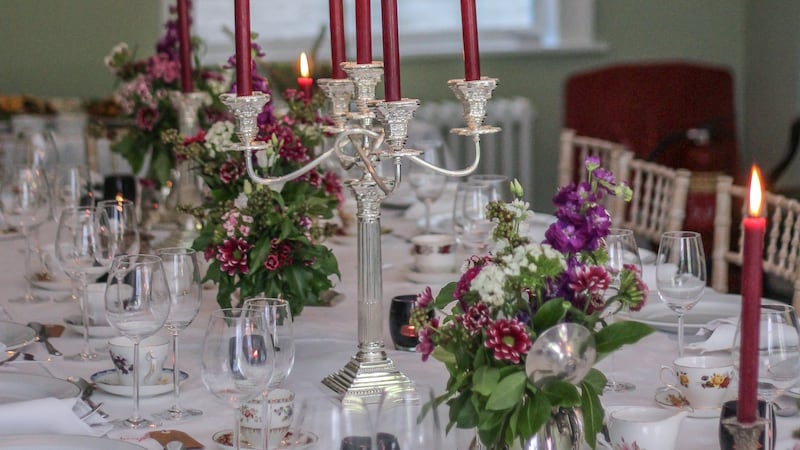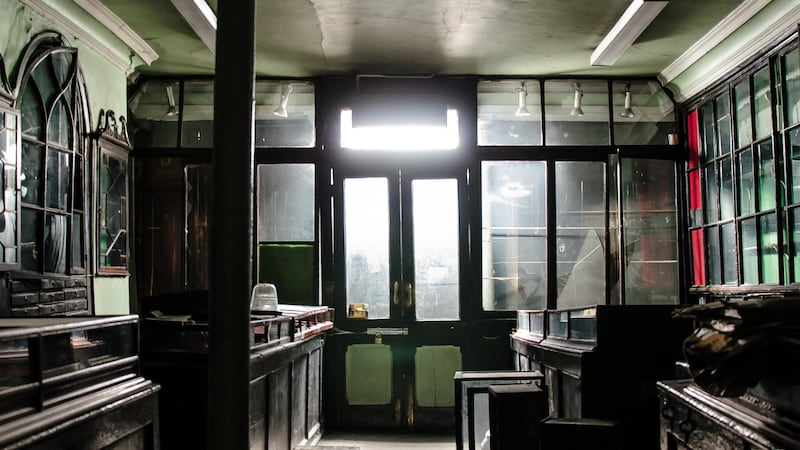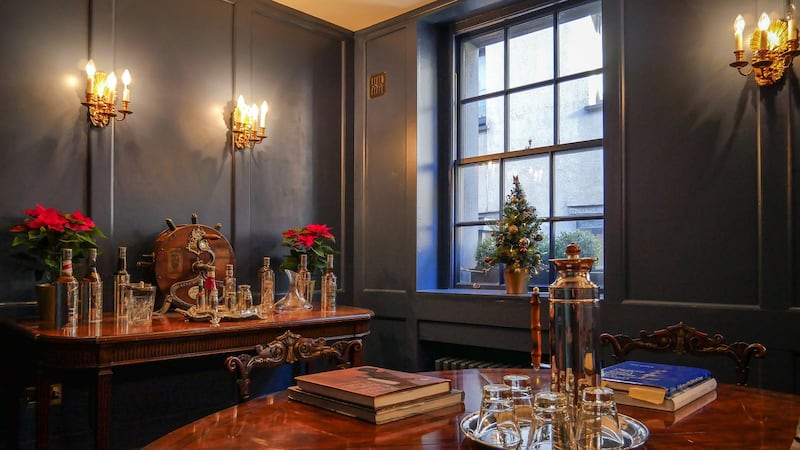At a candlelit private dinner in an upstairs room in Read's of Parliament Street last week, guests, momentarily transported to a Dublin of another era, marvelled at the conservation of this historic building. Ireland's oldest merchant's shop and house, it is now on sale for ¤2.5 million. Surviving 18th century shop interiors are extremely rare and the Read family traded here as cutlers for two and a half centuries making cutlery, swords and medical instruments. It was a time when merchants lived over the shop looking down on what was the city's first modern shopping street.
Clem Kenny, the Longford businessman who now owns the building and was responsible for its conservation – it received the Diaphoros Prize from the British Georgian Society last year – knows a thing or two about living over the shop. One of five, he was brought up over the family's drapery shop in Longford, started work there at the age of nine before going to boarding school in Rockwell College. With a background in the printing industry and later the building trade, he then set up a disability care business following the recession which he sold a year after his twin sister died of cancer.
He decided to buy Read's, then a derelict building with planning permission for four apartments, from Nama in 2011. During the Celtic Tiger years it was bought from the last remaining Read by Hugh O'Regan, the superpubs boss whose businesses crashed in 2008 and who died in 2012.O'Regan closed reopened Read's, but closed it after following an attack by thugs on the shop robbery in 1997.
0 of 4


“I had always known the history of Read’s up to a point and had a huge appreciation of heritage. I bought it without coming into the building and (its restoration) was a form of therapy after my sister’s death,” says Kenny when we meet in one of the building’s small upstairs rooms, which he painted a deep, dark blue on the first anniversary of her passing. “I took my time – four years – doing it because every time you opened something up, you discovered something else. It is like a massive set of Meccano. I have learned a massive amount about this building, its family history and tapestry is incredible.”
The Read family history goes back to 1712. James Read arrived in the city from a tenant farming family in Co Kildare to work as an apprentice cutler in a business established in the 1670s. He then took over the business in the 1720s. Read's were based in Crane Lane. Parliament Street was created in the early 1760s by the Wide Streets Commissioners to open up a direct route to Dublin Castle with shop buildings on either side. Read incorporated the late 17th century building into the new one on Parliament Street, according to conservation architect James Kelly. Successive Reads established themselves as Ireland's finest knife and sword cutlers, supplying fencing masks and foils and working with surgeons to make and improve their instruments.
The fascinating link to the property is the connection to Arthur Guinness whose mother was Elizabeth Read so many believe Read's to be the spiritual home of the Guinness family in Dublin. In 1821 Thomas Read & co was granted a royal warrant to supply cutlery and surgical instruments – the royal arms are now displayed on a wall inside the five storey building.


For Kenny and his team the conservation had unforeseen challenges along the way with an overspend that exceeded the original budget by one third. “For instance, there were 50 tons of stones on a floor held up by one cast iron column which had broken,” Kenny explains. “There were 14 chimney flues and the insertion of a butler’s tray had destabilised a whole chimney breast – had that come down the building would have collapsed onto the street. ”
"It was a month away from the whole place collapsing because of inadequate repairs in 1923 from bombs, grenades and bullet hole damage on that side. Dockrell's did the work and didn't repair it properly and that's where the extra one-third cost came in," he explains. "The guys working here were incredible and I put all their names and nicknames, including mine which is God Bless, on a plaque as a homage to them and then sealed it into one of the chimney flues." He also commissioned artist Ann Carrington to create a dramatic silver cutlery sculpture to celebrate the completion of the project. A copy has been acquired by the V & A in London and by designer Paul Smith.
There were plenty of interesting discoveries. “We found a doorway which everyone thought was a solid wall. It turned out to be the original door from Crane Lane. We found 11,500 items in the basement, swords, green handled cutlery still in its wrappings, but 80 per cent of the finds were medical instruments like a trepanning device for drilling the skull. A Read’s Cutlers corkscrew invented here sold for $55,000 in a New York auction in 1995.”
A fine arts student from Adams took two years to archive the finds. “He went through every single item and photographed them and they are now going on a long-term loan to the Royal College of Physicians,” says Kenny.
Given that it is now up for sale, Read's future is once again uncertain. "A heritage brand [like Read's] has value and we have all this creative history here in our own country. I don't have the luxury of enjoying the building for my own use. I would like to see a museum of industrial heritage in Dublin. Those interested include Maynooth College, the Royal College of Physicians and the OPW – a preferred location would be the old Kevin Street Garda station. We don't make enough of our silversmithing history."
This weekend Alwright & Marshall, a silversmithing workshop from 1870 that employed over 40 silversmiths is being cleared out of all its original 18th century handmade tools and benches. Kenny has arranged with the owner that these will be donated to the OPW on the understanding that the workshop will be rebuilt as part of the proposed industrial and merchant history museum. "The landlord is not renewing the lease and therefore Alwright & Marshall will cease. It is making way for a hotel and after this weekend you will never see a workshop like this either here or in the UK ever again".

















